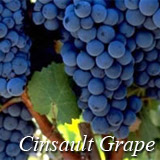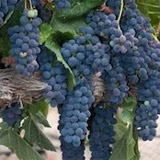Cinsaut or Cinsault is an ancient red wine grape variety that is believed to have originated in the Herault region (south of France), but could equally have been brought by traders from the eastern Mediterranean.
The vine can produce heavy crops, but crafted wines are much better if yields are controlled. Cinsault is very drought resistant but can be susceptible to disease, so appreciates a dry climate - this heat tolerance and productivity make it important in Bandol and Languedoc-Roussillon southern French. It can also be found scattered around Italy and Eastern Europe, also Australia has some Cinsault planted, although it has yet to achieve popularity there.
The grape was originally known as 'Hermitage' in South Africa (confusing, since the famed French Hermitage is entirely Syrah). When a South African professor crossed Cinsault with Pinot Noir, he therefore named it Pinotage - now the country's signature red wine. France has more Cinsault planted (50,000 hectares) than Cabernet Sauvignon and there is as much Cinsault vines planted in its former colony and wine region of Algeria. Cinsault is one of those varieties enjoyed by 'grape-growers' as it easily produces a very large crop of 6 to 10 tons per acre. Cinsault can be over-cropped and used as a filler-grape - which can make it difficult for many wine critics to give it any respect. It produces large cylindrical, tight bunches of black grapes with fairly thick skins. It is often blended with grapes such as Grenache and Carignan to add softness and bouquet.
When properly managed to a crop load of just 2 to 4 tons per acre, it can produce quite flavourful wines with penetrating aroma and soft tannins, and easily drinkable in its youth. Wine made from Cinsault grapes can be very aromatic with a supple texture that soothes the palate. Fairly low in tannin, it is often made into Rose by itself or blended, to brighten the fruit and tone down the harsher edges of Carignan, in particular.










